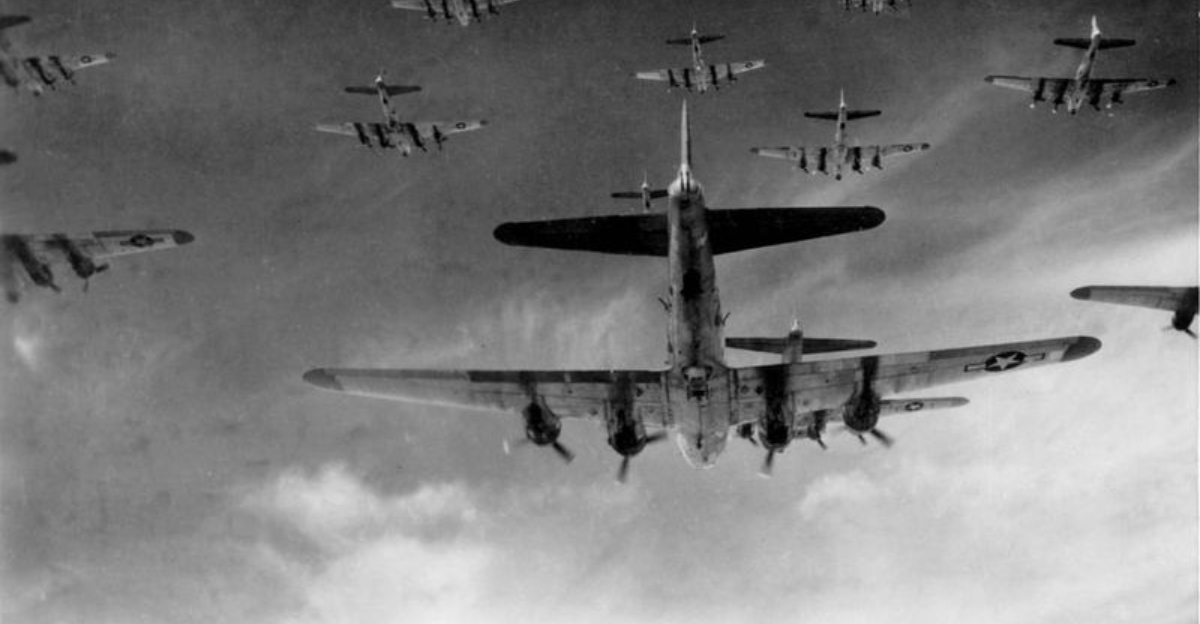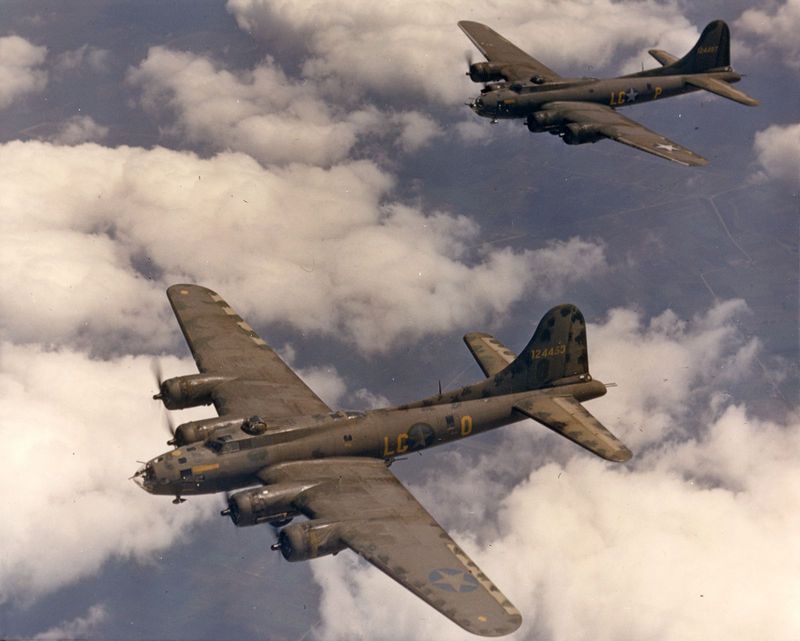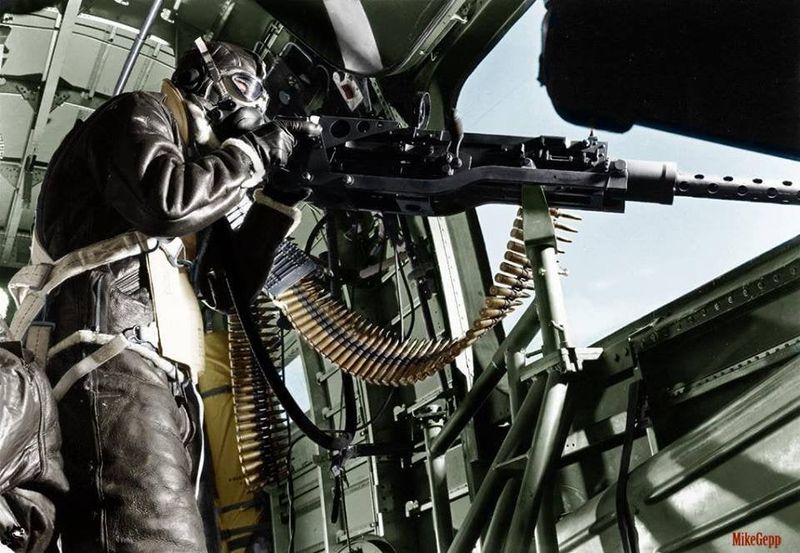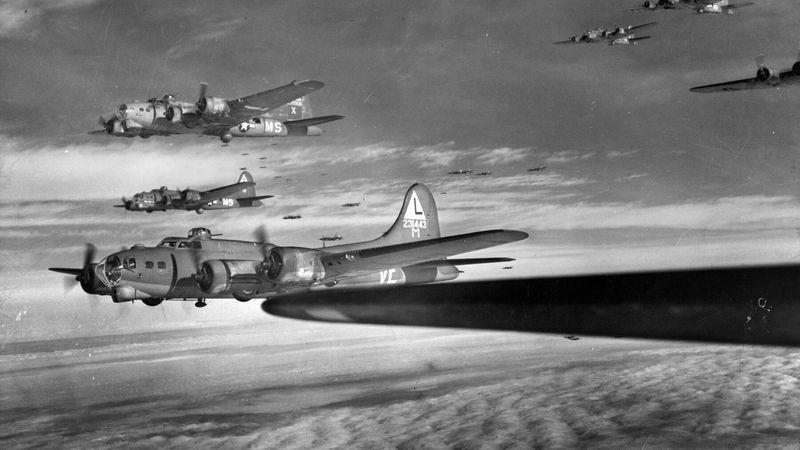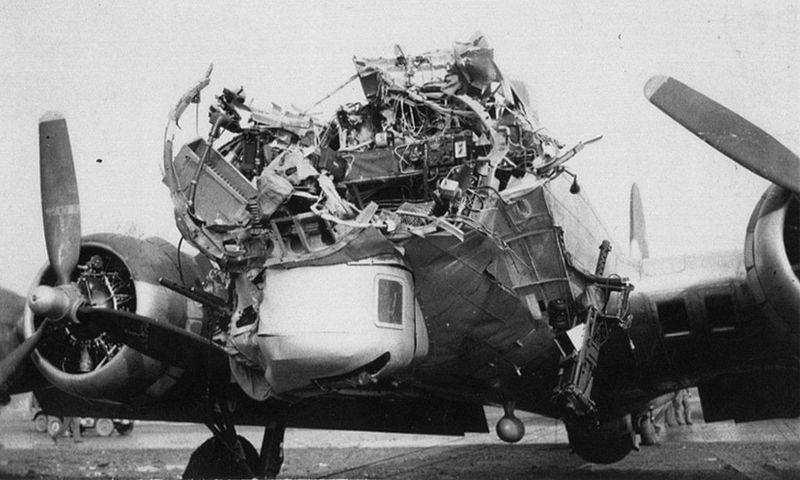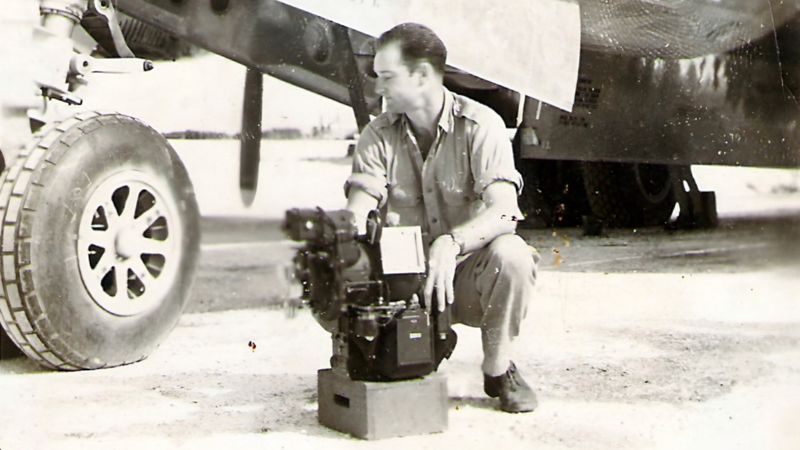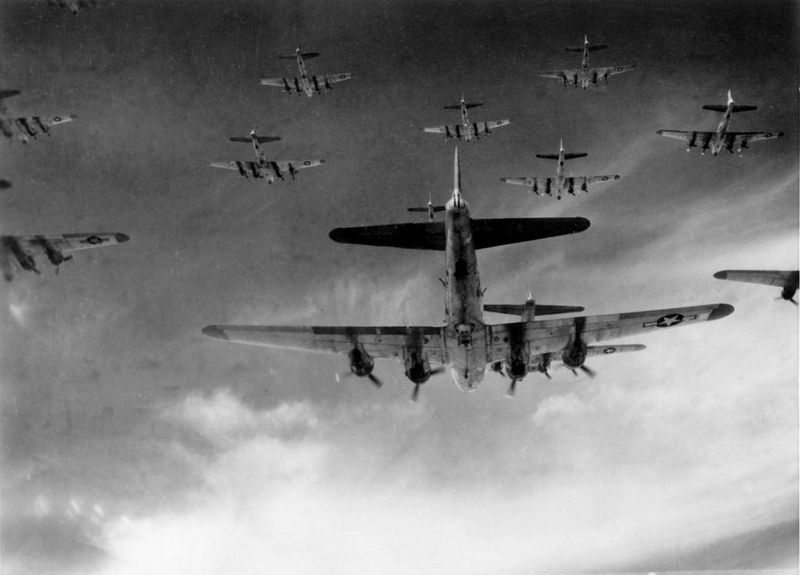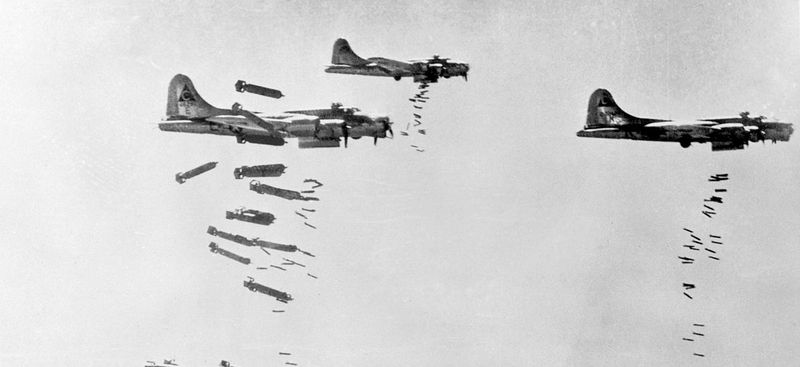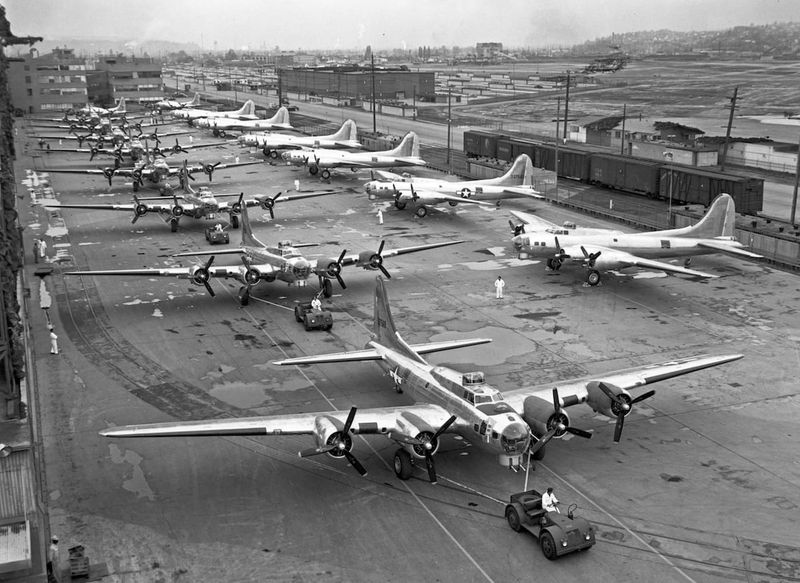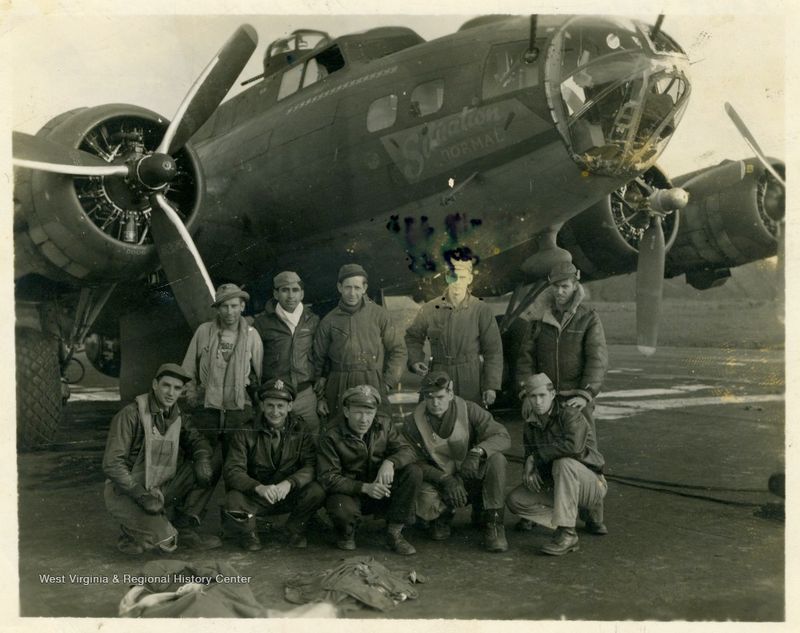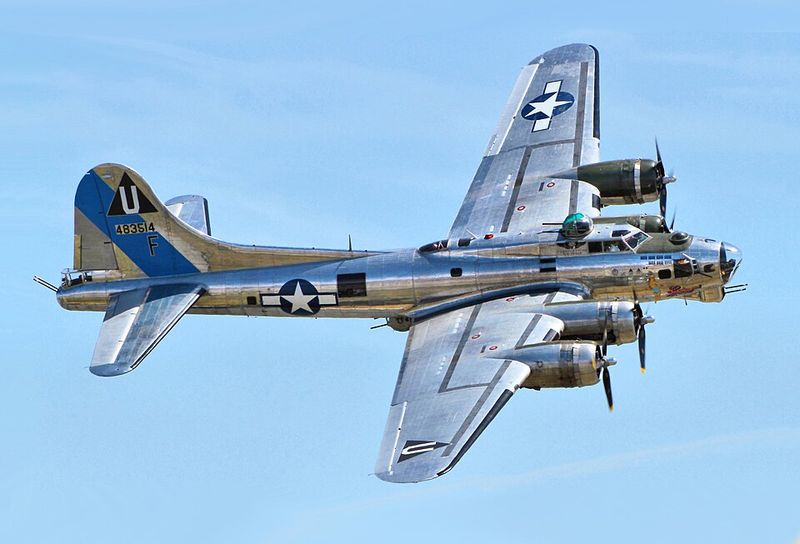The B-17 Flying Fortress earned its legendary status in WWII by combining innovative design, raw power, and unmatched durability. This iconic aircraft played a crucial role in the Allied victory, striking fear into the Axis powers with its formidable capabilities. Let’s explore the ten reasons why the B-17 was considered the most lethal flying fortress of the war.
1. Devastating Payload
The B-17’s ability to carry up to 8,000 pounds of bombs turned it into a flying demolition crew. Imagine the roar as it unleashed its devastating payload, leaving entire landscapes transformed to smoke and rubble. Pilots marveled at its capacity to reshape battlefields from above.
Each mission required precision and bravery, as crews synchronized their efforts to maximize impact. This enormous payload capacity didn’t just cause destruction; it symbolized the relentless pressure Allies put on enemy forces. Few aircraft matched this combination of heavy bombing and strategic execution in WWII.
2. Bristling with Guns
The B-17 was equipped with up to 13 .50 caliber machine guns, making it a veritable airborne porcupine. These guns provided a formidable defense against enemy fighters, ready to unleash a storm of fire from any angle.
Gunners, often young and fearless, operated these lethal weapons with precision and courage. They protected their flying fortress with a determination that inspired awe.
The strategic placement of these guns ensured every approach path was covered, turning the B-17 into a dreaded opponent in the skies. Its ability to defend itself was unparalleled.
3. Cruising Altitude Advantage
The B-17 could cruise at altitudes over 30,000 feet, often flying beyond the reach of enemy interceptors. This height advantage provided a tactical edge, allowing bombers to approach targets with reduced risk.
High-altitude operations required precise navigation and robust engineering. Crews adapted to thin air and frigid temperatures, relying on each other and their aircraft to complete missions.
This ability to fly higher than most fighters not only safeguarded the B-17 but also amplified its lethality. It approached targets from a protective perch in the sky, often unseen until it was too late.
4. Durability and Resilience
Stories abound about B-17s returning home with massive damage, testament to their legendary durability. Pilots often compared flying a B-17 to being wrapped in armor, capable of enduring punishing attacks.
This resilience wasn’t just mechanical; it inspired crews to push through adversity. The sight of a battered B-17 limping to safety became a powerful symbol of persistence.
In a war where attrition was common, the B-17’s ability to absorb damage and return was invaluable. It bolstered morale and confidence, knowing the aircraft could take a beating and still fight another day.
5. Precision Bombing Capabilities
With the advanced Norden bombsight, the B-17 could perform precision bombing with shocking accuracy. This technology allowed crews to strike strategic targets effectively, altering the course of battles.
The art of precision bombing required skill and nerve, as crews calculated wind, speed, and altitude to ensure bombs hit their mark. Such accuracy was groundbreaking, offering a new dimension to air warfare.
The precision with which B-17s could drop bombs changed the tactics of strategic bombing, transforming it from an art to a science with profound impact on enemy infrastructure and capabilities.
6. Team Player in Formation
Flying in tight combat box formations, the B-17s turned their overlapping fields of fire into deadly traps for enemy fighters. This tactic exemplified teamwork, where bombers protected each other through coordinated maneuvers.
The sight of these formations was both majestic and intimidating, a testament to the strategic thinking behind their design. Pilots depended on each other, creating a collective strength that enhanced their survivability.
In numbers, the B-17s were most lethal, a testament to the adage that unity is strength. Their formations became ironclad walls, difficult for adversaries to penetrate.
7. Strikes in the Heart of Nazi Germany
The B-17 earned its fearsome reputation by striking deep into Nazi Germany, targeting industrial centers and military factories. These missions were not just acts of war but statements of Allied resolve.
Each sortie was a high-stakes operation, requiring careful planning and execution, often under heavy enemy fire. Crews knew the stakes were high, as their success weakened the enemy’s war machine.
By crippling essential infrastructure, the B-17 helped turn the tide of the war. Its strategic bombing runs were critical in disrupting Nazi production capabilities, a key factor in the Allied victory.
8. Sheer Numbers and Production
With over 12,700 B-17s produced, this aircraft was more than a plane; it was a fleet. Such numbers allowed for relentless pressure on enemy defenses, saturating skies with formidable firepower.
Production on this scale was a logistical feat, reflecting the industrial might of the Allies. The sight of B-17s lined up on airfields spoke volumes about their strategic importance.
These numbers ensured that the enemy was always on guard, facing a constant threat that could appear at any moment. The B-17’s production scale was as much a weapon as its bombs and guns.
9. Heroic Crews and Missions
Each B-17 was crewed by ten young men, often facing perilous missions with courage and determination. These crews became legends, embodying the spirit of their flying fortress.
Their resolve was not just in facing the enemy but also in enduring the harsh conditions of long flights at high altitudes. They shared camaraderie, knowing each mission could be their last.
These heroes, some hardly out of their teens, flew with a sense of duty and honor. Their bravery was a hallmark of the B-17’s legacy, inspiring generations with tales of valor and sacrifice.
10. Symbol of American Air Power
Dubbed the “Flying Fortress,” the B-17 came to symbolize American air power and resilience. Its presence in the skies over Europe was a constant reminder of Allied strength and determination.
The image of a B-17, with its sleek silhouette and iconic insignia, became synonymous with hope and freedom for occupied territories.
As a testament to its symbolic power, the B-17 was not just a tool of war but a beacon of the Allies’ unwavering resolve. Its legacy endures, a tribute to the innovation and bravery that characterized this remarkable aircraft.
